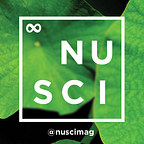Could spicy food be the key to living longer?
By Kelli Valentini, Bioengineering, 2024
Though not everybody can handle the heat, consuming spicy food may lead to a host of benefits. From cardiovascular to dietary effects, researchers are finding more and more ways that capsaicinoids, the class of compounds that make up peppers, can influence health.
Capsaicin is the most common capsaicinoid, making up 80 percent of capsaicinoid content in chili peppers, and is responsible for the painful burning sensation associated with chilis. Humans are the only organism that intentionally seeks out this sensation. Naturally, capsaicin protects plants from parasitic insects and molds. However, humans have historically used capsaicin for disease prevention and food preservation. Despite this longstanding history, capsaicin continues to be studied today and more potential therapeutic uses remain to be discovered.
Population-based studies have established a correlation between longevity and the consumption of spicy foods. One example is the China Kadoorie Biobank, which followed half a million men and women from several locations in China. This study found that people who consumed spicy foods on a daily or near-daily basis had a 14 percent lower risk of death in comparison to those who consumed spicy foods less than once a week. This study also observed fewer incidences of death due to cancer, coronary heart disease, and respiratory diseases among those who frequently ate spicy foods. Another study by researchers at the University of Vermont followed 16,179 adults in the United States. This study concluded that a diet rich in chili peppers reduced mortality by 13 percent.
While this correlation has been established by several studies, the mechanisms by which hot peppers affect health are only beginning to be discovered. Several theories exist and must be explored before a causal link is established. One such method is the activation of TRP vanilloid type 1 (TRPV1). Transient Receptor Potential, or TRP, channels are primary receptors for strongly flavored agents such as capsaicin. TRPV1 is activated when it binds to capsaicin, leading to the alteration of mediators of important cellular processes, like the breakdown of fats or thermogenesis, the production of body heat. This cellular response can help fight obesity. Additionally, TRP channels contribute to modulation of coronary blood flow, so capsaicin intake may also help defend against heart disease. Because obesity is comorbid with conditions such as cardiovascular, metabolic, and lung diseases, activation of TRPV1 via the consumption of chili peppers could help prevent these diseases as well.
There are other theories surrounding capsaicin’s involvement in health. Its antimicrobial properties have been theorized to alter the microbiome of the gut. Changes in metabolite production and bacterial colony composition and amount have been linked to conditions like obesity, diabetes, liver disease, and heart disease. Another theory involves a regulator of cellular growth: nuclear factor kappa-light-chain-enhancer of activated B cells (NF-κB). This regulator is inactivated by spices such as capsaicin, potentially resulting in anti-tumor effects. Studies show conflicting conclusions, however, and there is no consensus yet. It’s worth noting that neither theory has been fully explored, and the biological mechanisms behind these observed relationships have yet to be studied.
Overall, there is still a lot of ambiguity surrounding the effect of capsaicin on longevity. Two major studies followed a large sample size and controlled for influencing factors like economic status to demonstrate a correlation between the consumption of spicy food and extended lifespan, but more evidence is needed to show a stronger correlation. More studies with different cohorts would help to establish a stronger link. Furthermore, while some research suggests that capscaicin can help prevent obesity, tumors, and various diseases, the direct bioactive influence of capscaicin needs to be more closely studied before any significant conclusions can be drawn.
Fresh chili peppers also contain an abundance of other bioactive ingredients. Capsanthin, violaxanthin, sinapic acid, and ferulic acid are all powerful antioxidants. Peppers also contain vitamins A, C, K, B6, and potassium. Though research on capascain is still in progress, there are plenty of well-studied health benefits from these ingredients, so it may be worth it to start snacking on them now.
Molecules (2016). DOI: 10.3390/molecules21070844
European Journal of Pharmacology (2011). DOI: 10.1016/j.ejphar.2010.09.074
BMJ (2015). DOI: 10.1136/bmj.h3942
PLOS One (2017). DOI: 10.1371/journal.pone.0169876
